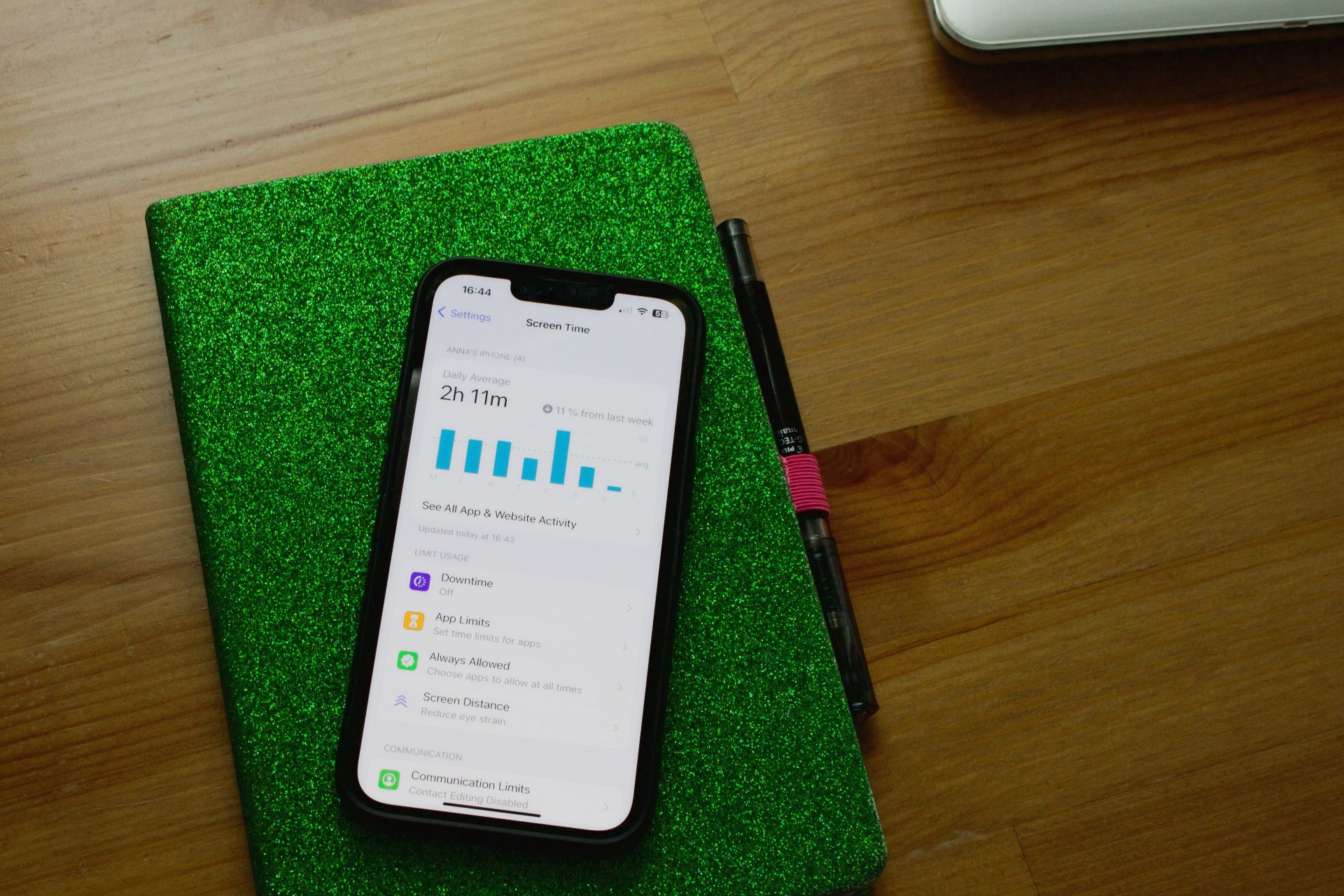Article: Anna Olivia Böke | Most phones have helpful features, but the work doesn’t stop there. [Image: Anna Olivia Böke]
It’s spring and the days are finally getting longer, but how much of this reclaimed daylight do we waste looking at screens? Some of that time is unavoidable if it’s for work or uni, but a lot of it can be spared with the right tools and mindset.
Start by building awareness of your own habits by keeping track of them. Every time you get out your phone, pause and think about your motif. Are you procrastinating? Are you uninspired? Did you simply want to look something up? Are you bored and need a dopamine hit? Is it just muscle memory? In most cases it is an unintentional move. In your settings you can find a graph telling you what apps you spend most time on – start there! It might be time to face the truth. To minimise your screen time there are a few things you can do to trick your brain. The rest, unfortunately, can only be curbed through sheer discipline.
- Guilt trip yourself with app limits
The most obvious thing to do is to turn on those notifications of your weekly screen time and confront the numbers. Also, set limits for those apps you use most. Your phone will lock the screen after you exceed the daily time limit and you then need to click a button to ignore it and keep using it. This shameful feeling can be a motivator and motivation is key. It is, however, not a long-term solution because we tend to develop a blind spot for these things.
- Remove the colour
A lesser-known feature on your phone is the grayscale mode. It changes the display to show images and text in black and white instead of colour. Colours can trigger dopamine responses in the brain, which can make using colourful apps and interfaces more addictive. Grayscale mode reduces this effect, making it easier to disengage from your phone, because it becomes less visually stimulating and engaging.
- Turn off notifications
Pretty simple and self-explanatory, but it helps. Similar to turning on “Don’t Disturb” mode you just don’t get notifications shown on your home screen, meaning your phone isn’t flashing every time someone messages you, but people can still call you. The downside: you need to check for messages if there is something important, which might cause the reverse. Just see what works and what doesn’t.
- 2nd Sim Card
This one is more committed, but it works. If you can’t get rid of your smartphone entirely, because of work or personal reasons, you can still leave it at home more often. Most contractors offer getting a second SIM card for a few extra coins with the same number, so you can rock an old-school Nokia or Motorola flip phone on the go and only use your smartphone when you really need it. This way people can still call and message you, but you can’t get lost doom-scrolling on your Sunday walk or check your e-mails during your catch-up with friends.
- Replace functions
While I am not trying to promote consumerism, it might help looking into which functions you can replace with a different gadget. Maybe this could even be an analogue feature like a wristwatch. How often did you open Instagram after you just meant to look at the time, take a note or skip a song? Getting an external MP3 player could help, too. If you use the notes app a lot, get a notepad and pen. The less you have to take out your phone, the smaller the risk of getting sucked in.

